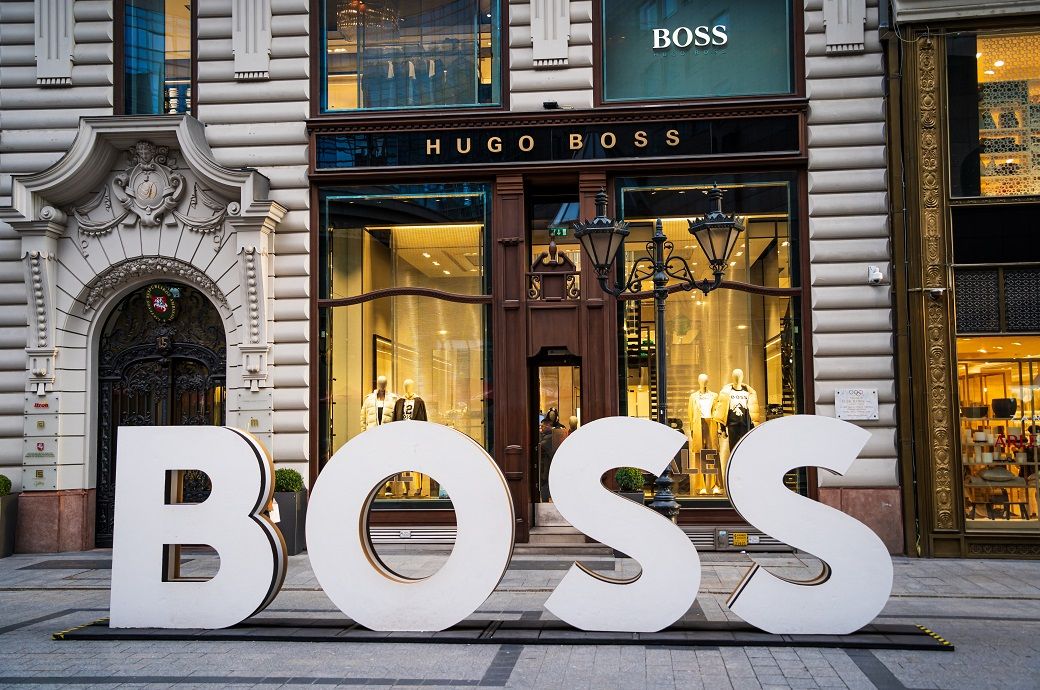
German fashion house Hugo Boss has reported a 1 per cent year-over-year (YoY) decline in sales in the third quarter (Q3) of 2025 (YTD: –1 per cent) on a currency-adjusted basis, yet delivered improved profitability driven by efficiency gains, stringent cost control, and optimised sourcing strategies.
The gross margin of the company rose 100 basis points (bps) to 61.2 per cent, reflecting lower freight costs and sourcing efficiencies, while operating expenses fell 3 per cent due to stringent cost management.
Operating profit (EBIT) remained broadly stable at €95 million (~$109.25 million), translating to a 9.6 per cent EBIT margin, up 30 basis points YoY. Earnings per share (EPS) increased 7 per cent to €0.85, supported by stronger financial results and lower net expenses. Free cash flow rose 63 per cent, driven by improved CapEx efficiency, Hugo Boss said in a press release.
Regionally, Americas showed renewed momentum (+3 per cent), while EMEA declined slightly (–2 per cent), with gains in Germany and France offset by weaker UK sales. The Asia/Pacific region fell 4 per cent, mainly due to lower sales in China, though Southeast Asia and Japan showed modest improvement.
“Despite ongoing global market volatility in Q3, we remained focused on our strategic priorities, emphasising long-term brand strength over short-term gains,” said Daniel Grieder, CEO at Hugo Boss. “We achieved meaningful efficiency gains, delivering notable gross margin expansion and streamlined expenses. This is clear evidence of the operational excellence and resilience at the core of our business model. Accordingly, we confirm our 2025 top-and bottom-line guidance while remaining vigilant in navigating ongoing market uncertainties.”
“Our ‘CLAIM 5’ strategy has been pivotal in driving our growth and establishing a strong foundation for long-term success. With our two iconic brands, a robust business platform, and the passion and commitment of our global teams, we are well positioned to create lasting value for our shareholders,” added Grieder.
The Boss Menswear line remained stable YoY, supported by the Beckham X Boss collection launch and the Boss Spring/Summer 2026 Fashion Show in Milan, both of which significantly boosted brand engagement on social media.
By contrast, Boss Womenswear and Hugo reported sales declines of 9 per cent and 5 per cent, respectively, as the company continued to refine product assortments and streamline distribution.
Channel-wise, digital sales advanced 2 per cent, driven by growth on its official website and through digital partner channels. Brick-and-mortar retail remained flat but improved sequentially from Q2, while wholesale declined 5 per cent due to delivery timing, expected to reverse in Q4.
Marketing investments fell 8 per cent to €70 million as the company prioritised high-impact initiatives like the Milan Fashion Show. Administration expenses were 2 per cent lower, highlighting strict overhead control. The company’s trade net working capital rose 11 per cent to €909 million, reflecting higher inventories and reduced payables but remained below Q2 levels.
Hugo Boss reaffirmed its 2025 guidance, expecting group sales and EBIT at the lower end of the ranges due to persistent macroeconomic and currency headwinds. Full-year sales are projected between €4.2 billion and €4.4 billion, while EBIT is forecast between €380 million and €440 million.
The company expects to maintain its EBIT margin within 9-10 per cent, improve efficiency through sourcing and administrative optimisation, and limit capital expenditure to the lower end of €200–250 million.
Fibre2Fashion News Desk (SG)
Disclaimer : This story is auto aggregated by a computer programme and has not been created or edited by DOWNTHENEWS. Publisher: feeds.feedburner.com






